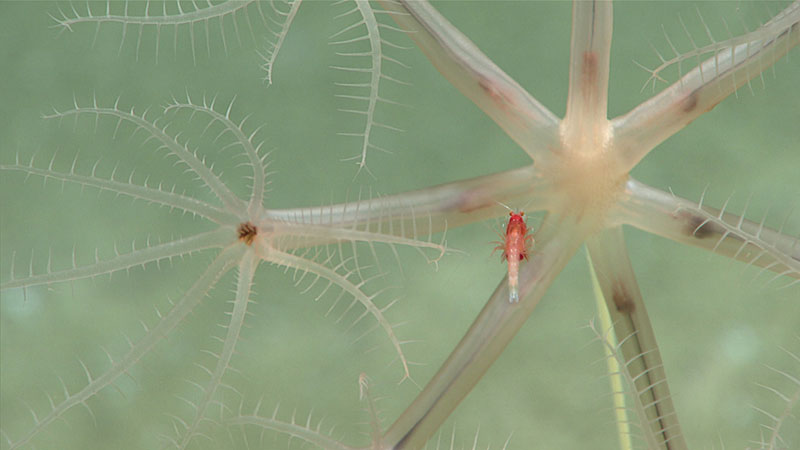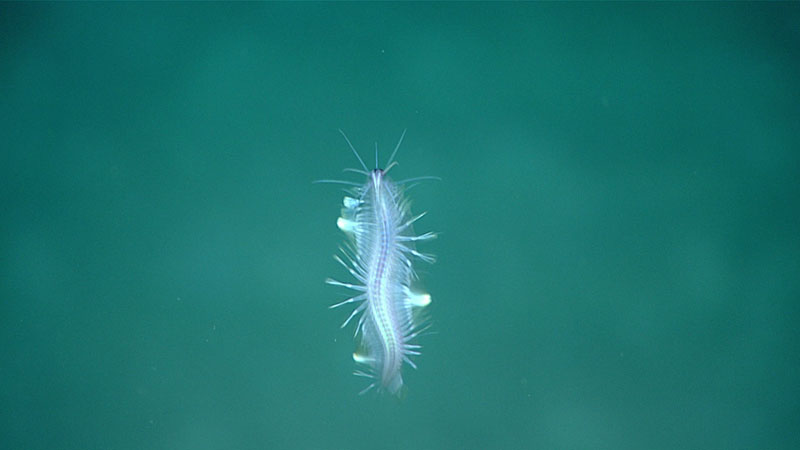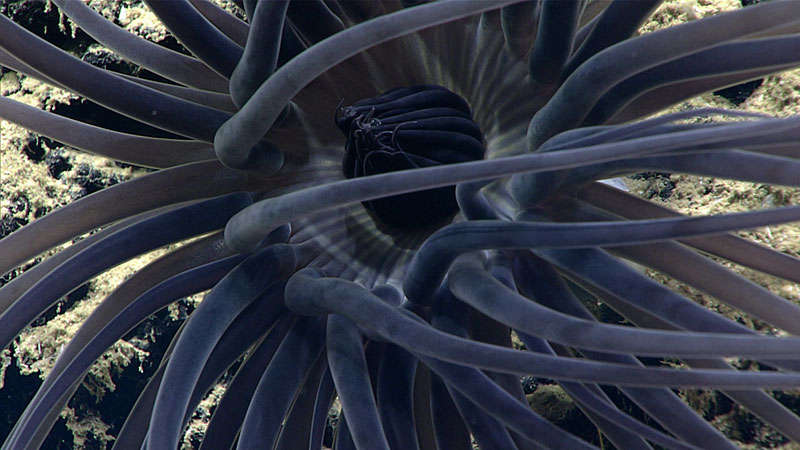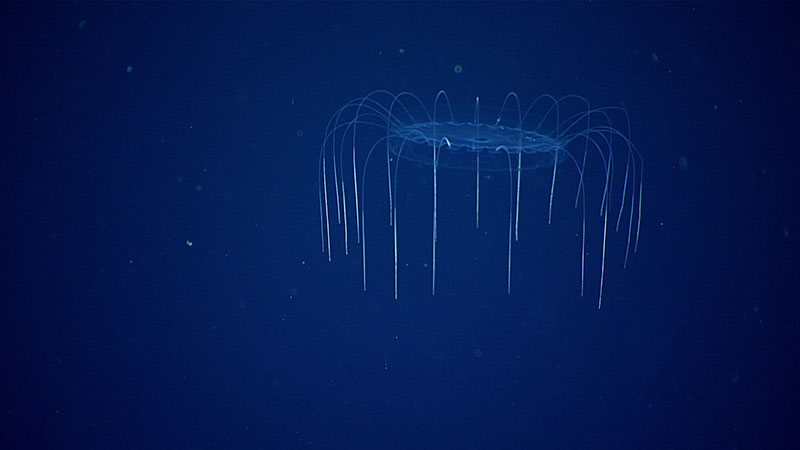-

Umbellula sea pens are sediment dwellers. This one has a mysid keeping it company. Mysids are commonly known as opossum shrimp, because they have brood pouches. You can catch a glimpse of the full red brood pouch as two red dots on either side of this mysid’s midsection. Image courtesy of the NOAA Office of Ocean Exploration and Research, Gulf of Mexico 2017. Download larger version (jpg, 574 KB).
-

A polychaete scaleworm (Polynoidae sp.) seen just above the seafloor. The combination of its undulations and the shimmering waves of its oar-like paddles that drive it through the water was positively hypnotic. Image courtesy of the NOAA Office of Ocean Exploration and Research, Gulf of Mexico 2017. Download larger version (jpg, 618 KB).
-

This cerianthid, a tube-dwelling anemone, is likely an unknown species. This one has built its tube of adhesive threads and sediment in a hole in the carbonate substrate. Image courtesy of the NOAA Office of Ocean Exploration and Research, Gulf of Mexico 2017. Download larger version (jpg, 872 KB).
-

A hydromedusa observed during midwater transects. Image courtesy of the NOAA Office of Ocean Exploration and Research, Gulf of Mexico 2017. Download larger version (jpg, 551 KB).